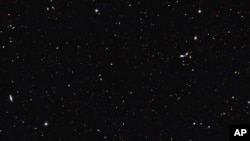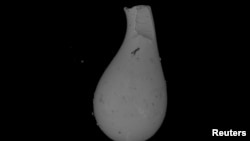Stars in a distant galaxy move at stunning speeds greater than 1 million mph, astronomers have revealed.
These hyperactive stars move at about twice the speed of our sun through the Milky Way, because their host galaxy is very massive, yet strangely compact. The scene, which has theorists baffled, is 11 billion light-years away. It is the first time motions of individual stars have been measured in a galaxy so distant.
Speeding Stars Confirm Bizarre Nature of Faraway Galaxies - Yahoo! News
These hyperactive stars move at about twice the speed of our sun through the Milky Way, because their host galaxy is very massive, yet strangely compact. The scene, which has theorists baffled, is 11 billion light-years away. It is the first time motions of individual stars have been measured in a galaxy so distant.
Speeding Stars Confirm Bizarre Nature of Faraway Galaxies - Yahoo! News



